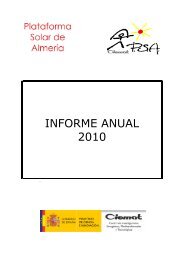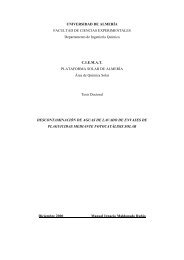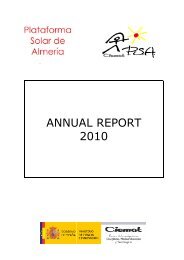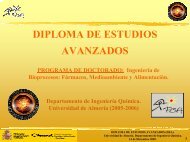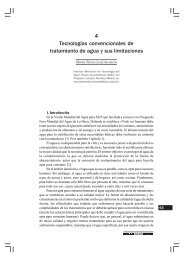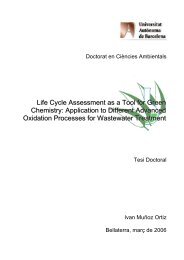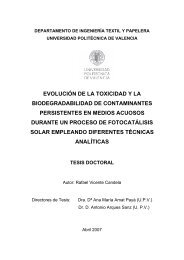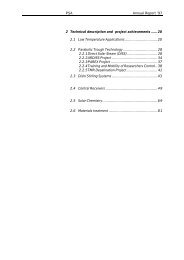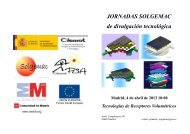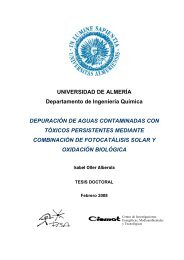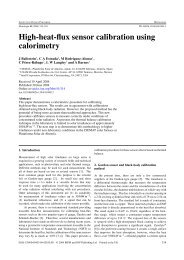Annual Report 2006 - Plataforma Solar de AlmerÃa
Annual Report 2006 - Plataforma Solar de AlmerÃa
Annual Report 2006 - Plataforma Solar de AlmerÃa
You also want an ePaper? Increase the reach of your titles
YUMPU automatically turns print PDFs into web optimized ePapers that Google loves.
CONCENTRATING SOLAR SYSTEMS UNIT<br />
Generation of hydrogen from high-temperature solar thermal<br />
energy (SolterH Project). PROFIT Project.<br />
Participants: Hynergreen and CIEMAT.<br />
Contact:<br />
Cristina Rodríguez;<br />
cristina.rodriguez@hynergreen.abengoa.com<br />
PSA Contact: Alfonso Vidal, Alfonso.vidal@ciemat.es<br />
Financiación: Cooperative Project fun<strong>de</strong>d by the MEC PROFIT program. Total<br />
budget: 987k€. CIEMAT budget not including personnel: 286k€<br />
Duración: January 1, 2004 – December 31, 2008<br />
Motivación: Thermochemical cycles are the processes we believe will be a<br />
great mid-term solution for mass clean hydrogen production from solar energy.<br />
Electrolysis is the hydrogen production benchmark for water-splitting.<br />
With 35% performance in the electric conversion and 70% in the electrolyzer,<br />
we would be talking about efficiencies of around 25%. With advanced technologies,<br />
this value could hardly surpass 32%. Although the use of nuclear<br />
energy is limited in thermochemical processes to around 900ºC, this is not<br />
true of solar energy. <strong>Solar</strong> concentrating technologies make flux of over<br />
5 MW/m 2 and temperatures over 200 K possible at a reasonable cost. This<br />
enables other more efficient two-stage thermochemical cycles with<br />
metal/oxi<strong>de</strong> redox reactions to be approached. The smaller number of stages<br />
is fundamental for solarization of the process and its adaptation to the fluctuation<br />
inherent in the solar resource.<br />
y<br />
Stage 1 (solar): M xOy<br />
→ xM + O2<br />
2<br />
Stage 2 (non-solar): xM + yH 2O<br />
→ M xOy<br />
+ yH 2 .<br />
The use of mixed oxi<strong>de</strong>s (based on iron) makes it possible to lower the<br />
temperature consi<strong>de</strong>rably, since the hydrogen generating stage is based on<br />
artificial creation of gaps in the oxi<strong>de</strong> structure, increasing the avidity for this<br />
material. Therefore, the Solter-H Project concentrates on <strong>de</strong>veloping technologies<br />
based on the use of mixed ferrites as the optimum candidates for<br />
thermochemical hydrogen production.<br />
Figure 3.24 Schematic diagram of the ferrite cycle for H 2 production selected in the<br />
SOLTER project.<br />
59



